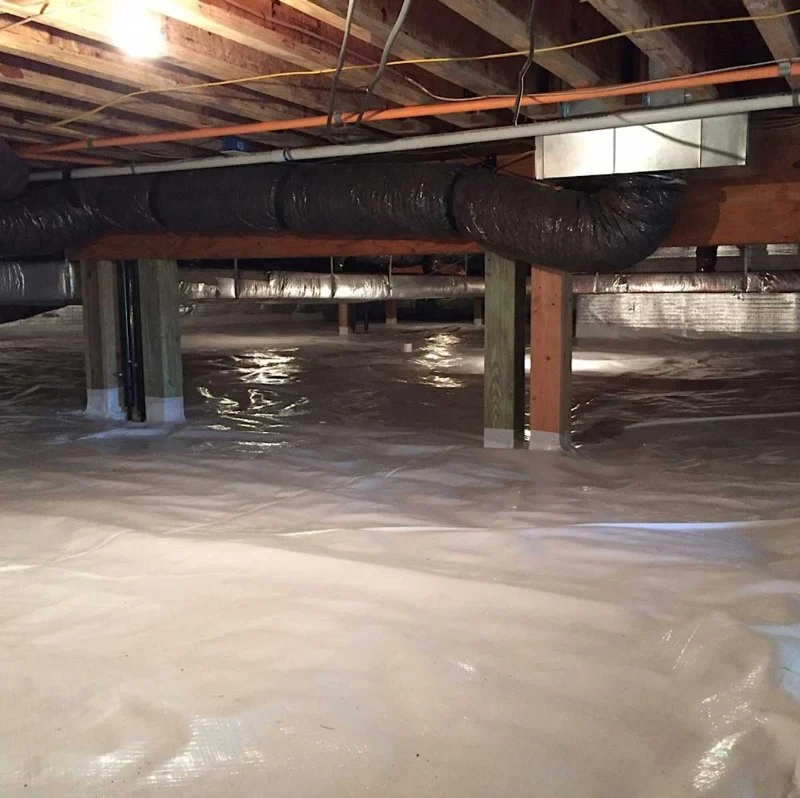
How to Keep Crawlspaces Ventilated & Pest-Free
- 1- Importance of Crawlspace Ventilation
- 2- Common Pests Found in Crawlspaces
- 3- Ways to Properly Ventilate Crawlspaces
- 4- Preventing Pest Infestations in Crawlspaces
- 5- Long-Term Maintenance Tips for Crawlspaces
1. Importance of Crawlspace Ventilation
Proper ventilation is critical for maintaining a healthy crawlspace. Without it, moisture can build up, leading to a host of issues such as mold, mildew, and wood rot. A well-ventilated crawlspace helps to regulate temperature and humidity, preventing these conditions that attract pests and cause damage to your home’s foundation. Additionally, crawlspace ventilation ensures a steady flow of air, which is key to keeping the indoor air quality of your home safe from harmful allergens.Without adequate ventilation, your home’s structural integrity could be compromised, and pests could find a haven in your crawlspace. Proper ventilation doesn’t just keep your crawlspace dry; it also creates an inhospitable environment for common household pests, keeping your home safe and healthy.2. Common Pests Found in Crawlspaces
Crawlspaces are a prime environment for pests due to their dark, damp, and often undisturbed conditions. If left unchecked, pests can easily invade and damage the structure of your home. Some of the most common pests that tend to invade crawlspaces include:- Rodents (Mice & Rats): Rodents love crawlspaces because they provide shelter and easy access to food. They can chew on insulation, electrical wires, and even wood, leading to costly repairs.
- Insects (Termites & Ants): Termites are particularly problematic in crawlspaces, as they feed on wood and can cause significant damage over time. Carpenter ants and other pests also thrive in these conditions.
- Moisture-Dependent Pests: Pests like cockroaches and spiders are often drawn to moist environments, making crawlspaces an ideal place to nest.
- Wildlife (Bats & Raccoons): Larger animals like raccoons or bats may also seek shelter in crawlspaces. While these pests are less common, their presence can cause significant damage and pose health risks.
3. Ways to Properly Ventilate Crawlspaces
Ventilating your crawlspace properly is the key to preventing moisture buildup and keeping pests out. Here are several effective ways to ventilate your crawlspace:- Install Vents: Crawlspace vents allow air to circulate and reduce humidity. These vents should be strategically placed on all sides of the crawlspace to ensure effective airflow. Make sure the vents are not blocked by debris or insulation.
- Use a Vapor Barrier: Installing a vapor barrier on the ground can help keep moisture from the soil out of your crawlspace. This is particularly important if your area has high humidity or frequent rainfall.
- Encapsulate the Crawlspace: Encapsulation involves sealing the crawlspace with a heavy-duty plastic lining that covers the floor and walls. This method not only reduces humidity but also prevents pests from entering.
- Install Exhaust Fans: For areas with particularly high humidity, an exhaust fan can be an excellent addition to your crawlspace ventilation system. These fans help expel moist air and bring in fresh, dry air.
4. Preventing Pest Infestations in Crawlspaces
Crawlspace ventilation is just one part of the puzzle when it comes to keeping pests at bay. There are additional steps you can take to prevent pest infestations in your crawlspace:- Seal Entry Points: Inspect your crawlspace for any gaps, cracks, or holes that pests could use to enter. Seal up these entry points with caulk or foam to keep pests out.
- Keep the Area Clean: Regularly clean your crawlspace to remove any debris, old insulation, or food sources that could attract pests.
- Install Pest Barriers: Use pest-proof barriers or screens on vents and openings to prevent rodents and insects from entering your crawlspace.
- Inspect and Maintain Insulation: Old or damaged insulation can be a haven for pests. Regularly inspect your insulation and replace it if necessary to ensure it isn’t attracting unwanted visitors.
5. Long-Term Maintenance Tips for Crawlspaces
Maintaining a pest-free and well-ventilated crawlspace is an ongoing process. Regular inspections and maintenance are essential to keeping things in check. Here are some long-term maintenance tips:- Schedule Annual Inspections: Have a professional inspect your crawlspace annually to ensure that ventilation systems are working properly and that no pests have entered.
- Check for Moisture Problems: Keep an eye on humidity levels and ensure that your crawlspace remains dry. If you notice signs of water damage, take action immediately to fix leaks or improve drainage.
- Monitor for Signs of Pests: Regularly check for signs of pest activity, such as droppings, chewed wires, or gnaw marks on wood. Catching an infestation early is key to preventing damage.







 Wildlife Resolutions4.0 (443 reviews)
Wildlife Resolutions4.0 (443 reviews) Pest Marshals of Toledo5.0 (2 reviews)
Pest Marshals of Toledo5.0 (2 reviews) LS Rodent Proofing & Pest Control Service5.0 (4 reviews)
LS Rodent Proofing & Pest Control Service5.0 (4 reviews) Best Termite & Pest Control4.0 (16 reviews)
Best Termite & Pest Control4.0 (16 reviews) Varment Guard Wildlife Services5.0 (28 reviews)
Varment Guard Wildlife Services5.0 (28 reviews) Pestban Inc4.0 (394 reviews)
Pestban Inc4.0 (394 reviews) How to Use Monitors to Detect Pest Entry: A Comprehensive Guide
How to Use Monitors to Detect Pest Entry: A Comprehensive Guide How to Predict Which Pests Will Invade Next – Smart Pest Forecasting for the U.S.
How to Predict Which Pests Will Invade Next – Smart Pest Forecasting for the U.S. How to Conduct a Pest Risk Assessment at Home – Expert Guide
How to Conduct a Pest Risk Assessment at Home – Expert Guide How to Block Pest Entry Around Deck Joists: Effective Solutions
How to Block Pest Entry Around Deck Joists: Effective Solutions How to Safely Use Fumigation Methods: A Comprehensive Guide for Homeowners
How to Safely Use Fumigation Methods: A Comprehensive Guide for Homeowners Why Pests Are More Active After Rain: Understanding the Link Between Weather and Pest Behavior
Why Pests Are More Active After Rain: Understanding the Link Between Weather and Pest Behavior